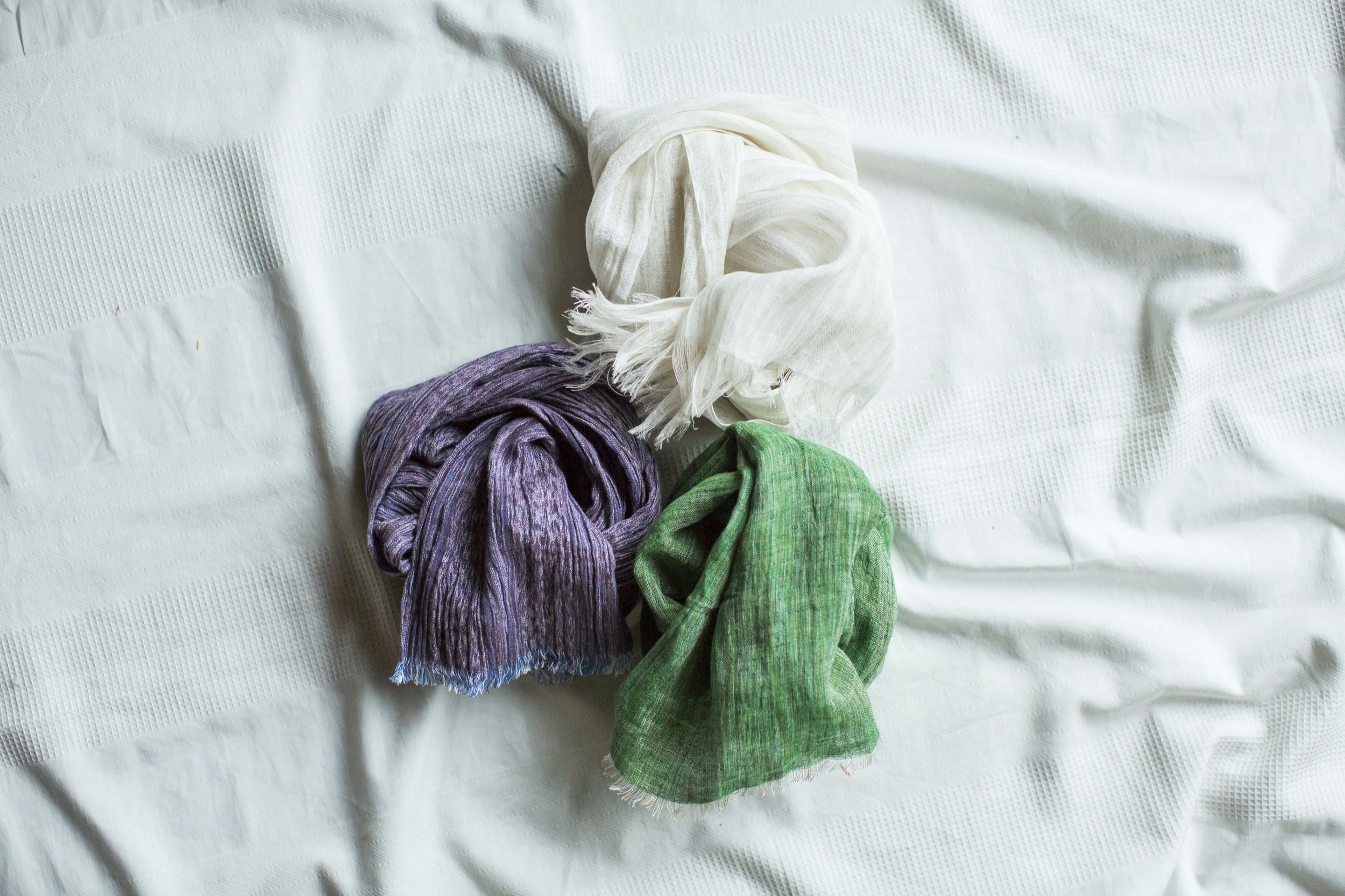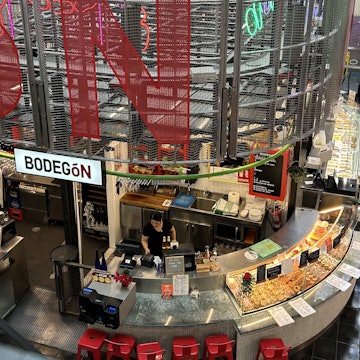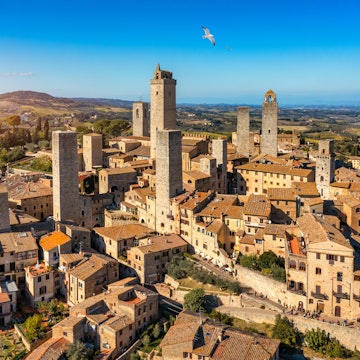
Intricate craftsmanship reflects the thoughtfulness of Japan’s Shiga prefecture
Sponsored by
Dec 22, 2020 • 5 min read

Sensations of calm and mental clarity are reflected in the signature crafts of the Shiga region of Japan © Omi-Jofu Traditional Crafts Center
Japan’s Shiga prefecture has for centuries been a site of quiet contemplation and thought. Its proximity to Kyoto, Japan’s feudal capital, and its wealth of natural resources including the serene and ancient Lake Biwa, have attracted poets, philosophers, and artists seeking solitude and a respite from the urban bustle.
The waters of Lake Biwa – and the sensation of calm and mental clarity they inspire – are reflected in the signature crafts of the Shiga region: the fascinating and meditative bin temari, and omi ramie, the light, cool linen for which Shiga is famous all over Japan.

Intricate, impressive bin temari
When first encountering a bin temari, many visitors’ first reaction is confusion. That’s because bin temari, just like a ship in a bottle, seems to defy all logic. A temari, a traditional Japanese cloth ball, appears inside a bottle – or bin – whose mouth is far too small for the ball to pass through. As it dawns on the visitor that someone must have constructed the temari through the opening of the bottle, their initial confusion quickly changes to reverence for the incredible amount of work and attention to detail.
The work that goes into making a temari by itself is significant. The balls, usually about the size of a tangerine, were originally made by mothers as toys for their children, traditionally constructed from scraps of old silk kimonos wrapped so tightly the balls would bounce. Experts believe the craft developed first in the small Shiga town of Aishō-cho town at the end of the Edo period, in the 19th century. As the craft developed, artisans made their creations ever more intricate, weaving special fabric for the balls and eventually embellishing them with painstaking hand-embroidery. At the pinnacle of the craft’s development, the balls were divided into ten sections, each with a distinct color and texture profile.

Preserving a disappearing art form
Temari masters undergo years of training to hone their craft. But to construct a temari inside a bottle – a feat requiring the precise tools and laser focus of a surgeon – is another level of mastery entirely. The first master bin temari makers devoted their lives to the development of these objects, which inspired contemplation and solemn admiration at the level of craftsmanship and single-minded dedication to the pursuit of beauty.
It’s not a livelihood, however, that is well-suited to the modern era. The craft began to disappear in the 20th century, as master bin temari artisans aged and passed away without imparting their knowledge to a younger generation. In the Meiji era, between the years 1868 and 1912, the number of master bin temari artisans dwindled to just a few people. In 1965, concerned citizens took action to prevent the bin temari from becoming solely a relic of the past, establishing a preservation society. Since then, the craft has been analyzed, studied, and recorded for posterity. In 2011, bin temari was designated the official craft of the Shiga prefecture. Today, thanks to the dedicated work of a few activists, there are around 80 people in Aishō-cho town who are familiar with the process.

Linen from the land
Where bin temari reflects the solitary contemplation of the views on Lake Biwa lake, the fine linen omi ramie textiles are crafted from the fruits of the land. The lowlands around Biwako lake, fed by mountain snowmelt, have always been fertile ground for hemp and ramie, a type of grass in the nettle family. For hundreds of years, locals have woven these plants into linen, stripping the tough outer bark and weaving it into yarn using wooden looms which require the skillful coordination of hands, feet, and torso. It’s slow work: an experienced weaver can produce only about five meters of woven cloth per day.
At its finest, omi ramie linen is perfectly suited to the hot, humid lowland climate of Shiga. It is lightweight and cool on the skin, perfect for summer-weight kimonos. But the high-quality linen produced on the southern shores of Lake Biwa didn’t escape the notice of the aristocrats of Kyoto, just ten kilometers away. The Hikone clan in particular appreciated the fine textiles, and bestowed their patronage on omi ramie artisans, propelling the craft to ever-greater heights.

Hundreds of years of experience
To this day, omi ramie is produced in the same way at the Omi-Jofu Traditional Crafts Center in Aishō-cho, on the eastern shore of Lake Biwa. Before the weaving process, the linen is divided into two batches. One will be dyed before it is woven into cloth, resulting in more natural, less vivid color that remains in the cloth for a long time. The other batch is dyed after the weaving process, frequently using the ikat process, which results in vivid color in a defined pattern – although that vivid color is more likely to fade over time.
Visitors looking to try their hand at the weaving process can experience it at Omi-Jofu Traditional Crafts Center, where there is a course for beginners to enjoy. But be warned: the traditional wooden loom takes plenty of practice before mastering. For those who would prefer to enjoy the fruits of hundreds of years of optimization – but actually woven by someone else – there is a well-stocked shop at the center, featuring omi ramie scarves, clothes, ben linens, dish towels, napkins, handkerchiefs, toys, and more.

If you’re going
Adjacent to Shiga Prefecture is Fukui Prefecture, which also has interesting traditional industries and cultural facilities unique to the area. The two prefectures are easy to explore. For more information, see Why Japan’s Fukui province is a deep well of master craftsmanship
Sponsored by Shiga & Fukui Prefectures, Japan
As a travel entertainment and inspirational media outlet, we sometimes incorporate brand sponsors into our efforts. This activity is clearly labeled across our platforms.
This story was crafted collaboratively between Shiga & Fukui Prefectures, Japan and Lonely Planet. Both parties provided research and curated content to produce this story. We disclose when information isn’t ours.
With sponsored content, both Lonely Planet and our brand partners have specific responsibilities:
-
Brand partner
Determines the concept, provides briefing, research material, and may provide feedback.
-
Lonely Planet
We provide expertise, firsthand insights, and verify with third-party sources when needed.















